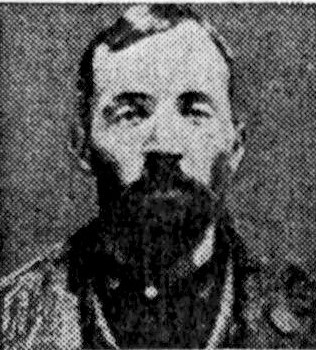
1870 - 1901
Martin Stickles
Summary
Name:
Nickname:
The Kelso KillerYears Active:
1899 - 1900Birth:
February 07, 1870Status:
DeceasedClass:
Serial KillerVictims:
3Method:
Shooting / stabbingDeath:
January 25, 1901Nationality:
USA
1870 - 1901
Martin Stickles
Summary: Serial Killer
Name:
Martin SticklesNickname:
The Kelso KillerStatus:
DeceasedVictims:
3Method:
Shooting / stabbingNationality:
USABirth:
February 07, 1870Death:
January 25, 1901Years Active:
1899 - 1900bio
Stickles was born on February 7, 1870, in Adams County, Iowa. When he was 18 months old, his family relocated to Washington. His mother described Martin as a sickly child who frequently became angry without apparent cause and was deemed "unnatural." Details about his early life are scarce, but at the time of the murders, Stickles lived in isolation on a scow. He sailed along the Columbia, Cowlitz, and Coweeman Rivers, working as a fisherman.
murder story
William B. Shanklin, a bachelor farmer and former neighbor of Martin Stickles, was the first victim. On November 22, 1899, while Shanklin was having supper in his cabin in Kelso, Martin shot him through the window with a rifle, killing him instantly. Martin then entered the house, stole valuables, and set the cabin on fire to cover his tracks. Despite the local sheriffs' efforts and a $300 reward offered by Governor John Rankin Rogers, no one was convicted. A weaver was initially tried for the murder but was later released. Stickles reportedly attended the trial.
A year later, on November 28, 1900, Stickles went to Castle Rock, where an elderly couple, Cornelius Knapp and his wife, lived. As they were having supper, Stickles shot them both through a window with a rifle, killing them. He stole their valuables but did not set their house on fire.
Stickles was interrogated about the murders and initially claimed innocence until investigators identified a watch and some keys as belonging to Shanklin. Martin then confessed to all three murders but attempted to implicate a neighbor, Edward Pierce, as the shooter, claiming he was merely an accomplice. However, the sheriffs believed there was only one shooter, as only a single pair of footprints was found at the crime scene, and Pierce was confirmed to be elsewhere at the time of the murders. Stickles described the crimes with a disturbing indifference, occasionally laughing and showing apparent joy while recounting the events, despite contradicting himself several times.
While awaiting trial in Pierce County jail in December, members of The Salvation Army visited the prisoners. After a sermon, Stickles was moved by the preachers' words and converted to Christianity, confessing that he alone had committed the murders. Despite the possibility of a death sentence, Stickles remained cheerful and claimed he would accept any sentence the court imposed. On his arraignment day before the Superior Court, he pleaded not guilty. His lawyers and family argued for leniency, citing his mental instability. Nevertheless, the jury found him guilty after only an hour of deliberation, and Justice Miller sentenced him to hang.
On January 25, 1901, Martin Stickles was executed. He delivered a short speech, expressing his hope that Jesus would welcome him in heaven. The execution was botched, resulting in significant injury and blood loss before Stickles died. Afterward, his body was handed over to his family for burial. During the final rites, a mysterious veiled woman, later discovered to have been promised marriage by Stickles via a newspaper ad, was observed among the attendees. This execution was later highlighted in an article discussing botched executions in Washington State, alongside that of Richard Quinn, a wife murderer, in 1910.